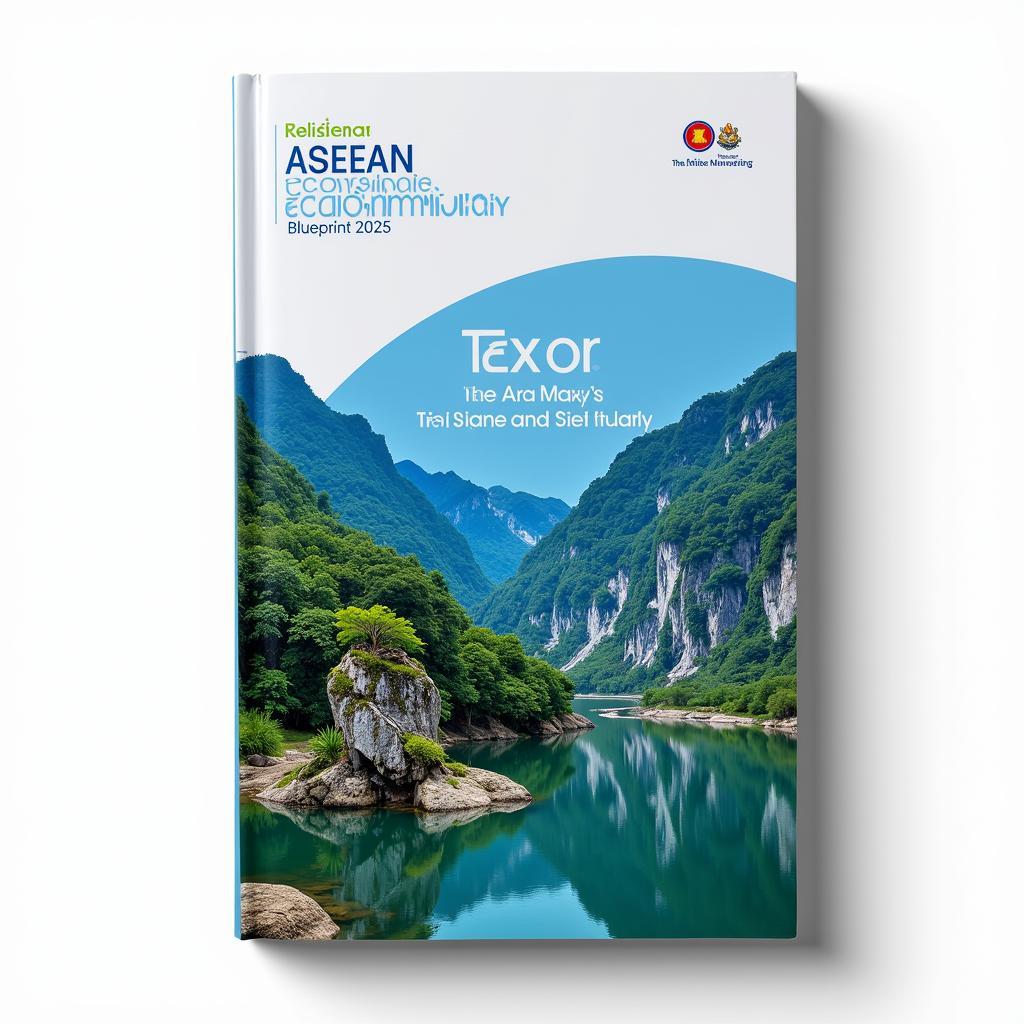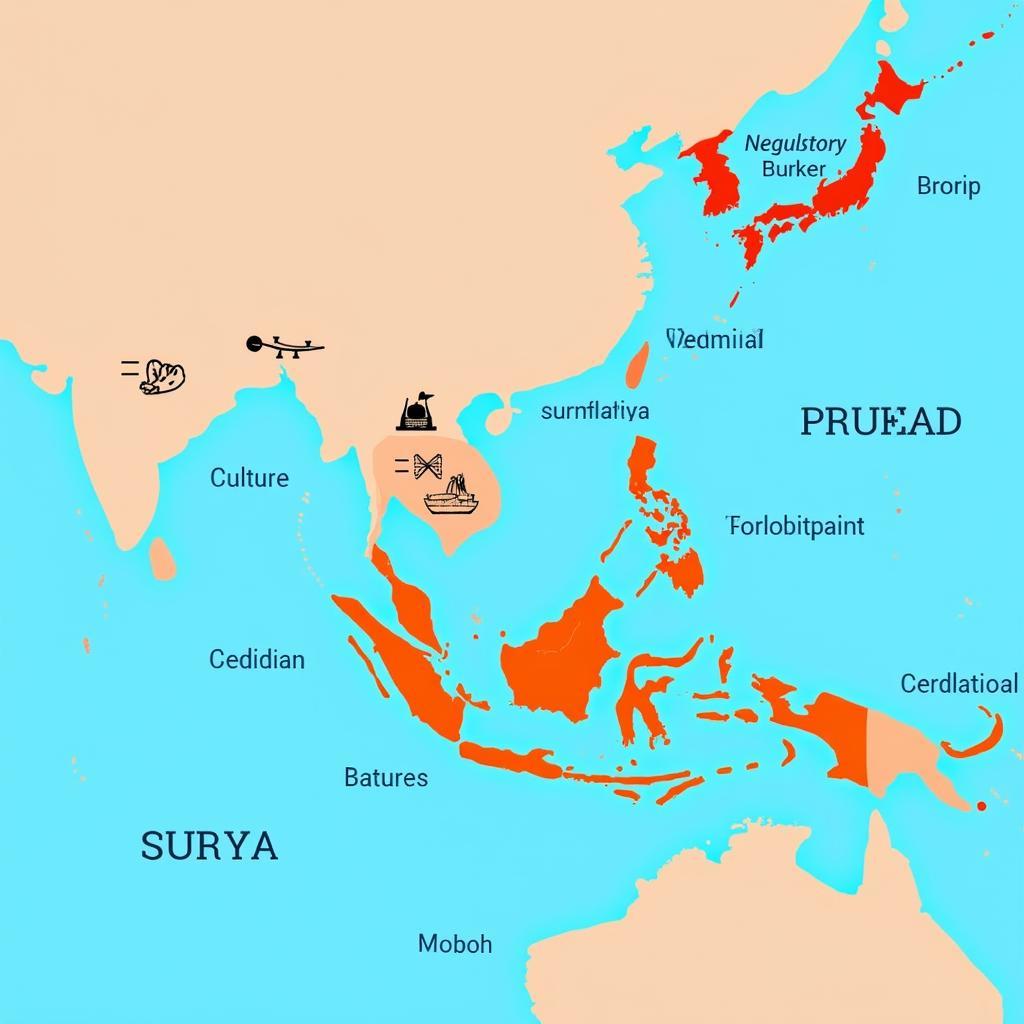The Asean Aec (ASEAN Economic Community) represents a significant milestone in Southeast Asia’s journey towards regional integration. Launched at the end of 2015, the AEC aims to transform the region into a single market and production base, characterized by the free flow of goods, services, investment, skilled labor, and freer flow of capital. This ambitious initiative holds the potential to unlock unprecedented economic growth and development for the ten member states. asean aec starting date
Understanding the Pillars of ASEAN AEC
The ASEAN AEC is built upon four key pillars: single market and production base, competitive economic region, equitable economic development, and integration into the global economy. These pillars are interconnected and mutually reinforcing, working together to create a dynamic and prosperous ASEAN.
The single market and production base aims to facilitate the seamless movement of goods, services, investment, and skilled labor within the region. This involves reducing tariffs and non-tariff barriers, harmonizing regulations, and promoting cross-border infrastructure development. A competitive economic region focuses on enhancing the region’s competitiveness by promoting innovation, entrepreneurship, and the development of small and medium-sized enterprises (SMEs). Equitable economic development aims to ensure that the benefits of integration are shared by all member states, including less developed countries. Finally, integration into the global economy seeks to enhance ASEAN’s engagement with the rest of the world through free trade agreements and other international partnerships.
Benefits and Challenges of the ASEAN AEC
The ASEAN AEC offers a plethora of benefits for the region. Increased trade and investment flows are expected to boost economic growth and create new jobs. Greater competition can lead to lower prices and improved quality of goods and services for consumers. The free flow of skilled labor can help address skills shortages and enhance productivity. Furthermore, the AEC can strengthen ASEAN’s bargaining power in international negotiations and attract more foreign investment.
However, the AEC also faces several challenges. Differences in economic development levels among member states can create disparities and hinder integration efforts. Non-tariff barriers, such as differing regulations and standards, can still impede trade. The lack of infrastructure development in some areas can limit connectivity and restrict the movement of goods and people. Furthermore, concerns about labor exploitation and environmental degradation need to be addressed to ensure sustainable and inclusive growth.
ASEAN AEC 2025: Forging Ahead
Recognizing the need to further deepen integration, ASEAN has adopted the ASEAN AEC Blueprint 2025. asean aec 2025 This blueprint builds upon the achievements of the initial AEC and sets out a more ambitious vision for the next decade. It focuses on five strategic areas: fully integrated market, enhanced connectivity, highly competitive region, resilient, inclusive, people-oriented, people-centred ASEAN, and global ASEAN.
The blueprint aims to create a more seamless and integrated market by further reducing non-tariff barriers, promoting e-commerce, and facilitating cross-border trade in services. It also emphasizes the importance of enhancing connectivity through infrastructure development, particularly in transport, logistics, and digital infrastructure. Promoting innovation, entrepreneurship, and skills development are key priorities for creating a highly competitive region. The blueprint also stresses the need to build a resilient and inclusive ASEAN that benefits all segments of society. Finally, it aims to strengthen ASEAN’s role in the global economy through greater engagement with international partners and participation in global value chains. asean aec english
“The AEC is not just about economic integration, it’s about building a more prosperous and integrated Southeast Asia that benefits all its citizens,” says Dr. Maria Santos, a leading economist specializing in ASEAN affairs.
Conclusion
The ASEAN AEC represents a transformative initiative that holds immense potential for Southeast Asia. By deepening regional integration, the AEC can unlock significant economic opportunities, create jobs, and improve the lives of millions of people. asean aec ascc While challenges remain, the commitment of ASEAN member states to the AEC vision, as reflected in the AEC Blueprint 2025, provides a strong foundation for continued progress. The ASEAN AEC is not just an economic project; it is a project of shared prosperity and regional integration that promises a brighter future for Southeast Asia. asean aec scorecard 2014
FAQ
- What is the ASEAN AEC?
- What are the four pillars of the ASEAN AEC?
- What are the benefits of the ASEAN AEC?
- What are the challenges facing the ASEAN AEC?
- What is the ASEAN AEC Blueprint 2025?
When you need assistance, please contact us by Phone: 0369020373, Email: aseanmediadirectory@gmail.com Or visit our address: Ngoc Lien Village, Hiep Hoa, Bac Giang, Vietnam. We have a 24/7 customer service team.

